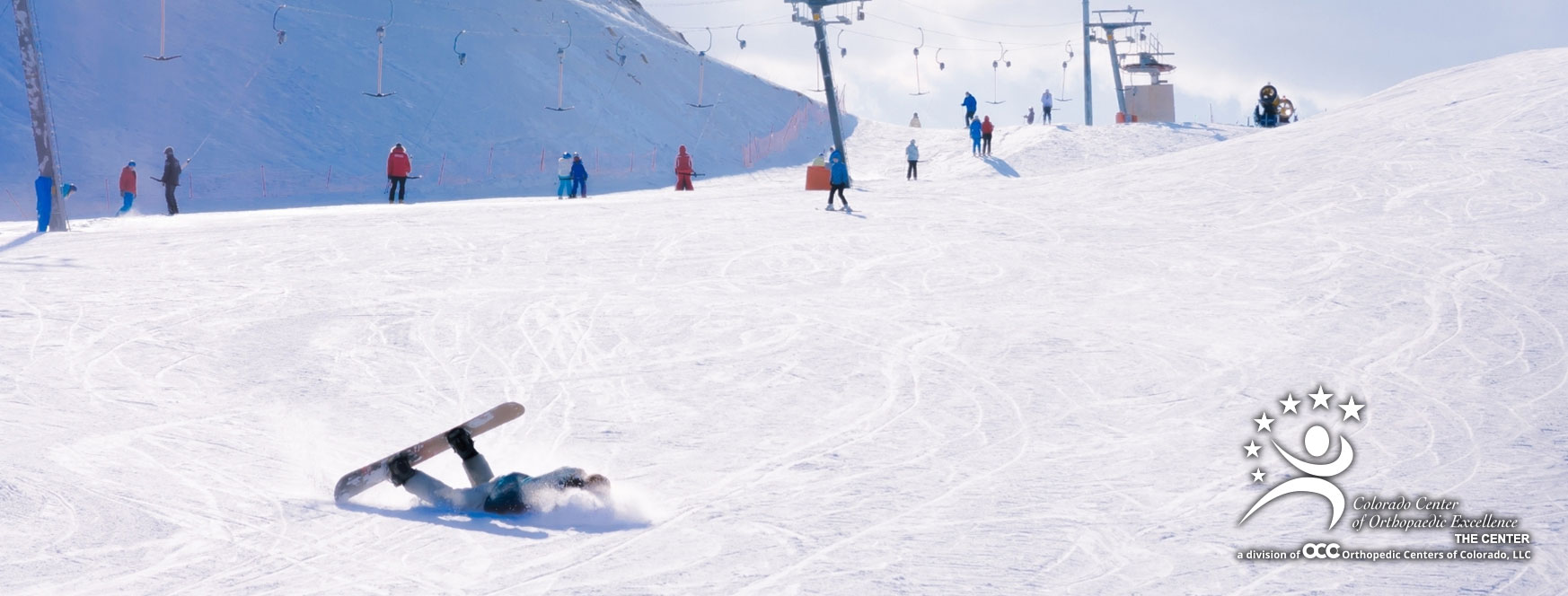A clavicle fracture – also known as a broken collar bone – is one of the five most common injuries skiers and riders experience. In fact, of the 10 people per day, on average, who are transported to the ER due to ski and snowboard injuries during an average ski season, shoulder injuries are the third most prevalent.
So as ski and snowboard season begins to heat up across the state, what do you need to know if you get a clavicle fracture?
How does a clavicle fracture occur?
It can happen in several ways – from a collision with another skier or rider, or during a fall. When someone falls forward, the natural reaction is to put their hand out to break the fall, which can result in a clavicle fracture. This is more common in snowboarding than skiing due to the nature of a rider’s position on the snowboard and the tendency to fall forward or backward, rather than sideways, which is more natural for a skier.
A clavicle fracture is usually painful and needs immediate medical attention
Most people know right away that something is wrong if they break their collar bone, because of the pain and inability to move their arm. Many will also experience swelling and even some bruising, but the pain is typically immediate. Depending on the severity of the fracture, the collarbone may look displaced or even look like it’s press against the surface of the skin.
How is a clavicle fracture treated?
It’s important to get prompt medical attention so that your orthopedic specialist can assess the severity of the fracture and look for bone fragments, nerve damage, or damage to the surrounding blood vessels. They will also likely use an X-ray to confirm the exact location of the fracture on the clavicle and determine if the bones are still properly aligned or if they have moved out of place.
If the bones are still in alignment, surgery is typically not required. Instead, orthopedic specialists typically recommend immobilization of the arm and shoulder to ensure proper healing. This involves wearing a sling to support the arm and elbow, which keeps the shoulder in the proper position while it heals. They may also recommend home care including ice and a mild pain reliever (such as ibuprofen or acetaminophen) to help patients manage the pain in the first few days as healing begins
As the shoulder begins to heel, the doctor may also prescribe physical therapy to begin to rebuild strength and mobility. These exercises will be very gentle, especially at first, and will help prevent weakness or stiffness in both the elbow and shoulder.
When is surgery needed for a clavicle fracture?
If the fracture is severe, if the bone broke in several places resulting in bone fragments, or the bones have moved out of alignment, surgery may be needed.
Surgery is done to realign the bone sections and securing them so they can properly heal. The most common way of restoring the clavicle structure is to realign the bone segments and then hold them in place with metal hardware, which may include pins, plates, or screws. This is called internal fixation. These metal pieces typically stay in place even after the bone has healed, but if they are bothersome, can be removed.
Surgery, like the original injury, can also result in some pain. But as the healing begins, the pain will diminish, and patients can begin to restore their strength and mobility through physical therapy. This process can take up to three months for full recovery – or more in certain circumstances, which means most skiers and riders are done for the season. But with proper recovery and therapy, you can return to the slopes once again.
Need to see a shoulder surgeon? Visit one of our shoulder experts today.














